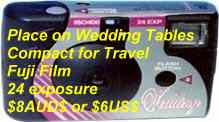ASTROPHOTOGRAPHY TELESCOPE TRACKING CAMERA PHOTOS
3


Being able to see the object your photographing through the camera's viewing area can be difficult because the glass is not clear except the small circle in the center of the viewer. This setup is useful for daytime shots, but annoying for astrophotography. Different cameras have different extents of unclear glass, yours may be alright for taking photos, but if it's hard to look through and obtain focus, then a guide scope may be needed solely to do the tracking of the object while the film is being exposed. To do this a second, small telescope is attached to the main telescope. This may be useful in a second way by the placement of the guide telescope can be used to counter balance the camera's weight. If your finderscope is up to the task, use it as the guide scope. A second way to overcome guiding difficulties through your camera is to use an off axis guider. An off axis guider allows you to view the object while your photographing by diverting some of the light to an eyepiece to one side of the focuser while still having the camera attached. These devices are specially designed for the job of astrophotography and make visual tracking easy as the eyepiece can have a reticle (cross hairs) screwed into it. The clarity of the eyepiece also enables precision focus as the object can be clearly seen.


